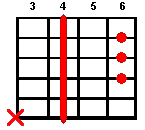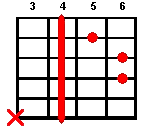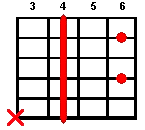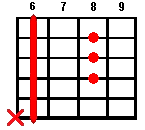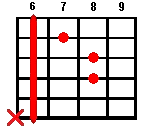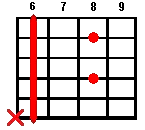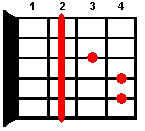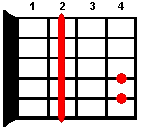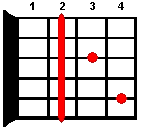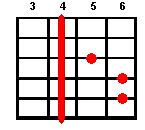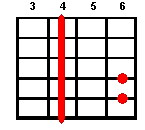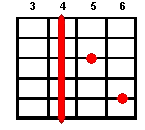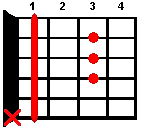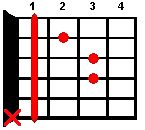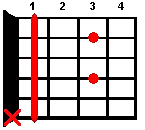Guitar Chord Chart
Welcome to our interactive Guitar Chord Chart. Here, you can easily find and learn how to play essential guitar chords. Whether you are a beginner or an experienced guitar player, this visual guide is designed to help you master chords and enrich your playing skills.
Explore Basic Guitar Chords
Our chord chart is organized into 12 blocks, each representing a different musical note. You'll find the basic chords for each note: C, C#, D, D#, E, F, F#, G, G#, A, A#, and B. Each block contains three key chord diagrams that are fundamental for playing songs in various keys.
How to Understand Chord Diagram Pictures
The chord diagram pictures above show guitar chords fingerings. Fingering is the pattern of finger placement on the guitar fretboard. The thinnest guitar string is shown at the top of the pictures. The frets are numbered at the top of the images.
- The red dots indicate where you need to press each string to create a particular chord.
- The red cross in the chord image means that the corresponding string should not sound in this chord.
- The long red stripe on the chord image indicates the barre technique - this means that all the strings should be plucked at the same time with one outstretched finger.
How to Improve Your Chord Mastery
- Start Simple: Begin with major and minor chords, and gradually add more complex chords to your repertoire.
- Practice Regularly: Regular practice using these diagrams can significantly improve your ability to switch chords smoothly and enhance your overall playing efficiency.
- Explore Musically: Use this chart as a stepping stone to experiment with creating your own music or adapting songs to your style.
Understanding Guitar Chords
Chords are built from the notes of the scale. For example, a C major chord is constructed from the notes C, E, and G. Knowing the structure of chords can help you understand how to play them and how they fit into the songs you play.
Barre Chords: A Key Technique
Barre chords are essential for playing guitar across the fretboard. These chords require you to press down multiple strings with one finger. Although challenging at first, with regular practice, you will be able to play barre chords smoothly.
Improving Your Chord Transitions
Transitioning between chords can be difficult for beginners. To improve, practice finding common pressure points on the strings for each chord. For example, transitioning from Am to Dm involves maintaining the pressure on the 2nd fret of the 3rd string. With time and practice, your fingers will naturally move to the correct positions.
Dive Deeper into Each Note
On this page, you are presented with 36 guitar chord diagrams, which are sufficient to play virtually any song in the world in any key. While more complex chords may appear in some songs, you can often substitute them with simpler chords provided here. If you wish to explore all possible chords, including more advanced variations, simply follow the links "All chords of ..." to dedicated pages for each note. Each dedicated note page offers additional chord diagrams and variations, helping you to explore different sounds and techniques.
How else can you use this chart?
- Visual Learning: Each chord diagram shows the finger placement on the guitar fretboard, making it straightforward to understand how to position your fingers.
- Quick Reference: This chart serves as a quick reference to learn and revisit the chords as you practice.
Whether you are practicing at home, teaching others, or composing your own music, our Guitar Chord Chart is here to assist you every step of the way. Embrace the joy of guitar by starting with these foundational chords!




